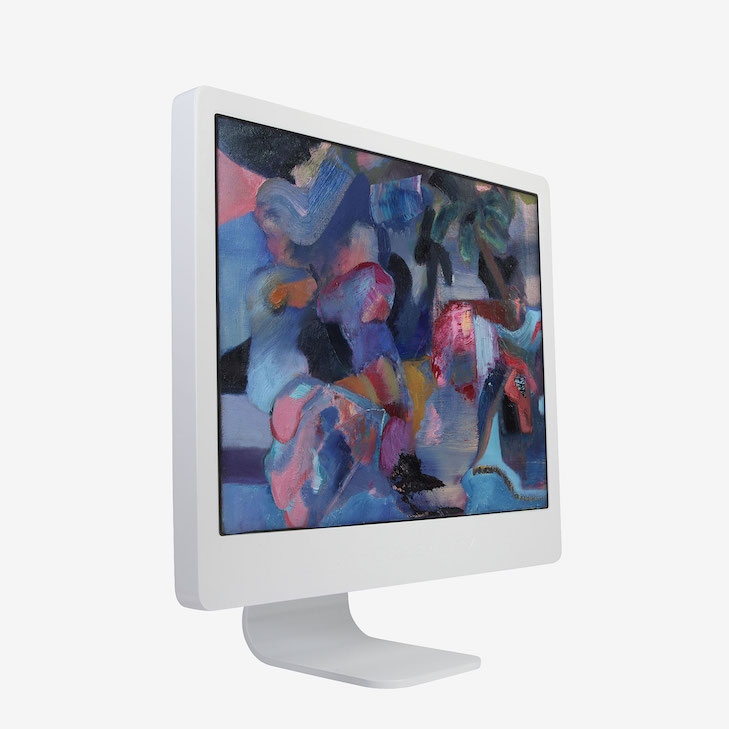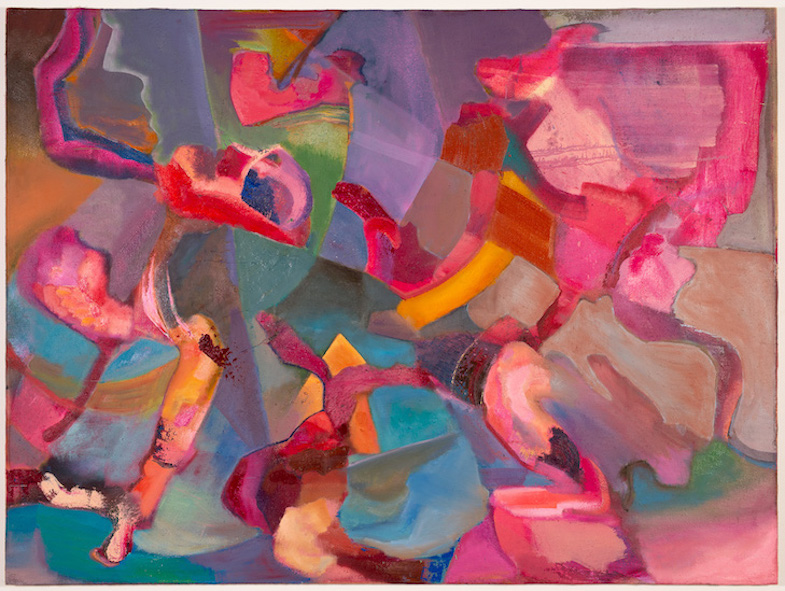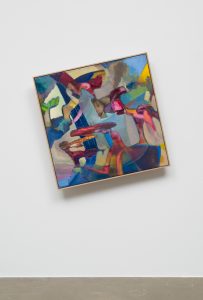INTRODUCING

The latest book the artist Alexander Iskin read was the biography of the Russian—and later Soviet—composer, conductor, and pianist Sergei Prokofjew, who is perhaps best known for his irresistible fairy-tale masterpiece “Peter and the Wolf.” We suggest revisiting this story: its multiple plots and the viewpoints of its protagonists—the wolf, Peter, the duck in the wolf’s belly, the grandfather, the cat—offer a refined attunement to Iskin’s rotating “interrealistic” landscape paintings and their many possible narratives. This simultaneity of perspectives, worlds, and angles lies at the core of Iskin’s practice, ultimately coalescing into a painting.
These seemingly abstract reflections were sparked while listening to “Peter and the Wolf” and immersing oneself in Iskin’s complex new Time Line that he lays before us to take over our lives: Interreality. If you, like Prokofjew, detest hackneyed devices, we strongly recommend visiting Alexander Iskin’s upcoming opening, #bababadalgharaghtakamminarronnkonnbronntonnerronntuonnthuuntrovarrhounawnskawntoohoohoordenenthurnuk, on Friday 5th of April at Sexauer Gallery.
Please tell us about Alexander Iskin, what is the core that defines him?
Paintings control me, my artistic approach controls me and influences the time and actions. I love to take walks, to jump into different stories, through live and other realities.
I relax while listening to the stories of others.
The colours always change, which allows my inner plant to breathe and refill itself with new content for the following process. Sleeping is a great invention, too and touching. Touching or being touched is like an enlightening of all the colours which are inside of you. P.S. I am a big tennis and soccer fan. I barely watch, but I read all the articles.

In an interview from last year with James Scarborough, you describe that your performances are expressing your feelings as a doll on this planet. When I think of the by now “infamous” performance in which you destroyed your smartphone and a MacBook I feel like it is the exact opposite, as you are actively not only changing your own matrix with a physical and very intense action but also the visual reality of the viewer; hence a very powerful act of taking control?
The performance space attracts me because it enables, albeit temporarily, a direct engagement with the fluid system of identity in the external world. In my recent works, I fashioned myself as an avatar that enacts representational perceptions in a symbolic register. “Doll” is not the appropriate term here; it is closer to a mask in the sense of the ancient Greek persona, which denotes both mask and person simultaneously.
In what you referred to as the “infamous Apfelmus” performance, I aimed to proclaim a new timeline that is overtaking our lives—the here and now, the time of Interreality. This is a movement in its own right, traversing from the future to the past, or conversely from the past to the future.
There are so many questions about the future nowadays that we don’t have the time to remember anymore and as soon as the performance is over, the avatar gets dissolved and leaves space for a new one.
When opening the performance I quoted from Dantes Divina Comedia, referring to how ephemeral our “being here” is.

Ok, Elevator pitch! How would you describe or make me join and most important understand the impact of the Interreality movement?
Interreality is an invented space which describes the process of transforming into a new space. Interreality denotes the multi-perceptivity and multi-perspectives of our present reality, the interactions that are simultaneously taking place, that are constantly creating this collective fantasy we are living in.
This feeling of being on the run to somewhere what pretends to make sense, but can get dissolved in the next second.

In a world and society in which the way people consume and buy has become the last form of subjective action, „Ich kaufe also bin ich“ I ask myself what happens when millions of people lose their jobs and therefore a big chunk of their income, due to robots and computer systems taking over. It would create an extreme abyss for the consumer society, how is your take on this scenario?
By allowing ourselves to be defined by our own commodification (social media) we have already opened the door towards slowly losing our autonomy. As an artist, I have big problems with the authorities.
I don’t want to take part in anything that contains a “must“ in it.
But back to the question: I don’t think that AI is going to destabilize our economy to the extent that people won’t be able to consume anymore. I rather suspect that due to AI and basic income we will become even more forced into constantly consuming and feeding the algorithms that keep us “alive”.

Please tell us a bit about your upcoming exhibition. What’s more, I would also like to know what you are reading at the moment!
After announcing the timeline of “Interreality“ during the last performance at Sexauer, I wanted to fill this space with life. Therefore I travelled through different realities in different continents. Over the winter period, when all the trees are naked, I locked myself in the “Art Castle Beesenstedt” which is in the countryside. This was the perfect setup for the show I wanted to put together. I was keen to explore the fluidity of the setup objects (Rotation Paintings) by filling them with different memories, which on the one hand get dissolved by rotating them, while on the other hand they open up a new space of possible perception.
It allows the constant change of perspective and perception of the painting, which I find fascinating. My painting language quotes the beginning of the 20th century. Painters like Müller, Schmidt-Rotluff, or even Chaim Soutine with his drunk landscapes, but also Arshile Gorky or others.
Actually, I don’t do this on purpose. People tell me that it reminds them of something, which I really like because memories are significant. The title of the show is a succession of the word thunder in ten different languages.
A rumble of thunder is a metaphor of destroying and creating, which is the practice of art in itself. As a contradiction, a hashtag is a referential system of the digital space, interlinking references with each other and creating clusters of lineages.
The digital space just persists—there is no time, no memory, no forgetting and no rebirth.
Everything exists until the end of time until a giant solar flare is wiping out all our servers or a giant painting brush repaints the whole world. I believe in the second option. I was just reading this article and the biography of Sergei Prokofjew.
Alexander ISKIN | Solo Show
#bababadalgharaghtakamminarronnkonnbronntonnerronntuonnthuuntrovarrhounawnskawntoohoohoordenenthurnuk
Opening 5th of April 2019, 6–9pm & Aftershow Drinks !!
Exhibition runs until the 8th of June 2019.
Sexauer Gallery | Streustraße 90, 13086 Berlin
Header Photo: Pinky’s Brain, 2018 Oil on canvas, 150 × 200 cm
Author: Esther Harrison


